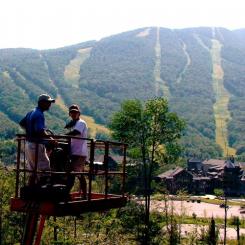Some contractors prefer not to get involved with lead-based paint, and those who do require training and instruction. It’s no secret that contractors who work in areas with lead paint and disregard RRP rules, either accidentally or purposefully, can face stiff penalties. If your company offers lead abatement procedures, you may need to prepare to step it up a notch.
In July, the US EPA announced a proposal to enact stricter regulations for those working in lead abatement. Current standards allow trace amounts of measurable lead dust on floors and window sills. The new standard would disallow any measurable level. If finalized, the EPA reports, this rule is estimated to reduce the lead exposures of approximately 250,000 to 500,000 children under age six per year. According to an article published by CNN, Biden administration officials stated that this proposed rule was part of their larger agenda to get lead out of the nation’s housing and school stock.
Current standards allow dust-level hazard standards (DLHS) of 10 micrograms per square foot on floors and 100 micrograms on window sills. The proposed standard would reduce that allowable measurement to zero, in recognition of the fact that there is no safe level of lead in dust. In addition, the proposed standard would reduce dust-lead clearance levels (DLCL) from 10 micrograms to 3 micrograms on floors, and from 100 micrograms to 20 micrograms on window sills, and from 400 micrograms to 25 micrograms on window troughs. Those measurement are the lowest post-abatement dust-lead levels the EPA believes can be “reliably and effectively” achieved.
Any amount of lead dust is too much
The push behind the proposal is to basically say that any lead dust in a structure is unsafe, and therefore a building is not considered properly abated if any is left on the premises. “There is no safe level of lead. Even low levels are detrimental to children’s health, and this proposal would bring us closer to eradicating lead-based paint hazards from homes and child care facilities across the U.S once and for all,” said Assistant Administrator for the Office of Chemical Safety and Pollution Prevention Michal Freedhoff.
The proposal, if passed, reduces the allowable levels of lead dust on surfaces such as floors and windows to “the lowest post-abatement dust-lead levels that the Agency believes can be reliably and effectively achieved. The proposed rule would strengthen EPA’s regulations under section 402 of the Toxic Substances Control Act (TSCA) by revising the dust-lead hazard standards (DLHS), which identify hazardous lead in dust on floors and window sills, and the dust-lead clearance levels (DLCL), the amount of lead that can remain in dust on floors, window sills and window troughs after lead removal activities.”
Permanent effects of lead poisoning
The effects of lead poisoning are not reversible. Lead exposure poses a significant health and safety threat to children and can cause life-long health effects, including behavioral problems, lower IQ, slowed growth and more. The EPA estimates that approximately 31 million houses built before 1978 still contain lead paint, and of those, approximately 3.8 million are home to children under six years old; most of these homes are in poor and underserved communities that haven’t been able to afford lead abatement.
According to an article published on the EHS Daily Advisor. the changes would be far reaching, including:
• An expansion of the categories of regulated properties.
• Changes to the thresholds for determining when lead abatement is required.
• New requirements for required lead disclosures in sale and lease contracts.
A years-long battle
Some organizations have been fighting for this change for a long time. For example, the group Earthjustice wrote that the EPA’s standards for lead safety have long been too lax, and even in 2019 when these standards were revised they still didn’t sufficiently protect children from exposure to lead dust. “A limit of zero [lead dust] is necessary to truly protect health,” the article states. “Generations of children were poisoned by lead due to the EPA’s failure to act urgently and the unprotective standards it set. This win will almost immediately halt a major source of lead exposure for the following generations of kids.”
If you are working in the lead abatement field, it’s important to keep up on your federal, state, and local regulations. It may be even more important in the future.










Comments
New proposed Lead level standards
What will this do to companies that are RRP certified that have invested tens of thousands of dollars to buy the EPA approved equipment to meet the 95% threshold? I doubt any company making preparation equipment such as Festool will be able to meet a zero threshold. Which in my opinion means no one will do any lead encapsulation work due to the preparation involved so there potentially could be a large increase in childhood lead poisoning.
Add new comment